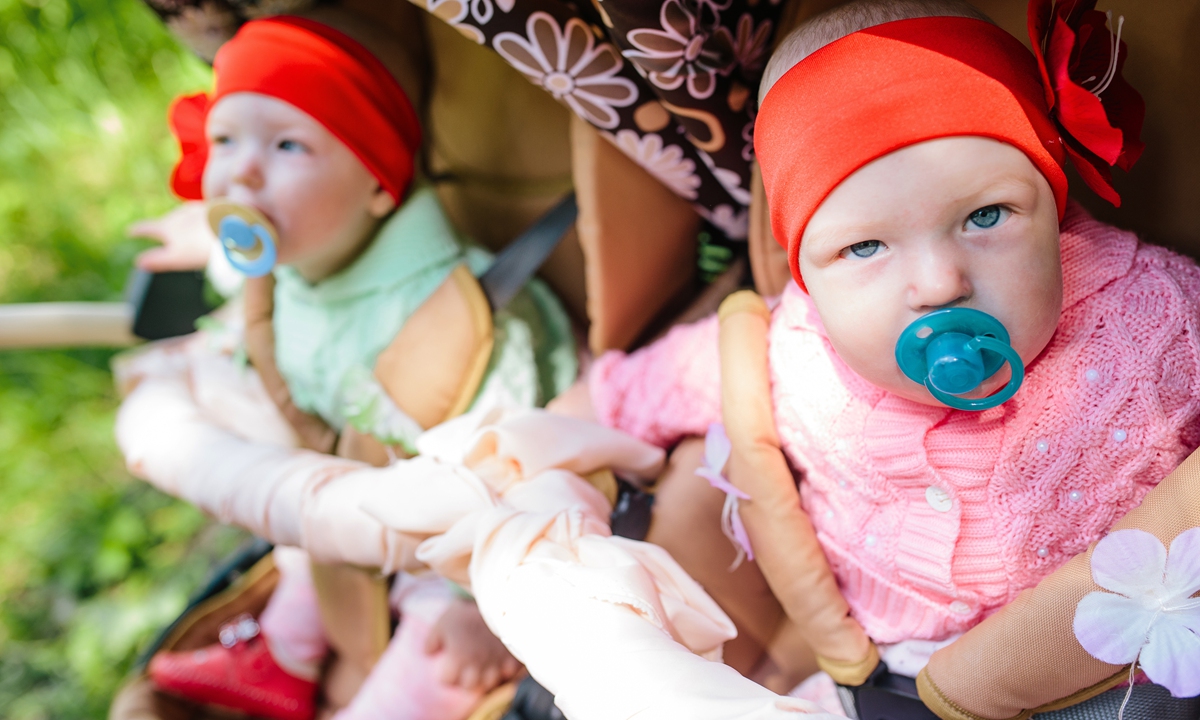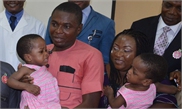Scientists find population link to reproduction techniques
IVF means more twins born
More twins are being born now than ever before, largely due to rising use of in vitro fertilization (IVF) and other assisted reproduction techniques, the first global study of human twinning has found.

This might well be "peak twins," scientists behind the research said - particularly in high-income regions such as Europe and North America where there is now an emphasis on refining fertility treatments to minimize multiple births.
"We think we're actually at the peak," said Christiaan Monden, a professor at Britain's Oxford University who co-led the review. "This is likely to be an all-time high. The relative and absolute numbers of twins in the world are higher than they have ever been since the mid-20th century."
Monden's research team, whose findings were published on Friday in the journal Human Reproduction, analyzed data on twinning rates for 165 countries between 2010 and 2015 and for 112 countries for the period 1980-85.
They found a 71 percent rise in twinning rates in North America, as well as significant rises in many European countries and in Asia. For Asia overall, there was a 32 percent increase, and only seven countries saw falls of more than 10 percent in twinning rates over the study period.
The researchers noted that rates of monozygotic or identical twins - born from the same egg - were barely changed, stable at about 4 per 1,000 deliveries worldwide.
This meant the vast majority of the increase in twinning rates was due to high numbers of dizygotic or nonidentical twins.
This was especially true in Africa, Monden said, and is most likely to be due to genetic differences between African populations and other populations.
"Most twins you'll meet in Japan are identical twins," he said, "while most twins you'll meet in Africa are non-identical - and we think that's genetic."
While factors such as women choosing to start families later, greater use of contraception, and lower fertility rates might be playing some part in the increase in twinning rates, Monden said medically assisted reproduction techniques are the main drivers. Such fertility treatments were originally available in wealthier regions, but spread to emerging economies in Asia and Latin America in the 1980s and 1990s, reaching the relatively richer parts of South Asia and Africa after 2000.

These children are taking part in the Twins Parade at the local Stepanov Park, on June 5, 2016. Photo: AFP
With about 1.6 million twins born each year worldwide, the global twinning rate has risen by a third since the 1980s, to 12 per 1,000 deliveries from 9 per 1,000 around 30 years ago, the study found.This might well be "peak twins," scientists behind the research said - particularly in high-income regions such as Europe and North America where there is now an emphasis on refining fertility treatments to minimize multiple births.
"We think we're actually at the peak," said Christiaan Monden, a professor at Britain's Oxford University who co-led the review. "This is likely to be an all-time high. The relative and absolute numbers of twins in the world are higher than they have ever been since the mid-20th century."
Monden's research team, whose findings were published on Friday in the journal Human Reproduction, analyzed data on twinning rates for 165 countries between 2010 and 2015 and for 112 countries for the period 1980-85.
They found a 71 percent rise in twinning rates in North America, as well as significant rises in many European countries and in Asia. For Asia overall, there was a 32 percent increase, and only seven countries saw falls of more than 10 percent in twinning rates over the study period.
The researchers noted that rates of monozygotic or identical twins - born from the same egg - were barely changed, stable at about 4 per 1,000 deliveries worldwide.
This meant the vast majority of the increase in twinning rates was due to high numbers of dizygotic or nonidentical twins.
This was especially true in Africa, Monden said, and is most likely to be due to genetic differences between African populations and other populations.
"Most twins you'll meet in Japan are identical twins," he said, "while most twins you'll meet in Africa are non-identical - and we think that's genetic."
While factors such as women choosing to start families later, greater use of contraception, and lower fertility rates might be playing some part in the increase in twinning rates, Monden said medically assisted reproduction techniques are the main drivers. Such fertility treatments were originally available in wealthier regions, but spread to emerging economies in Asia and Latin America in the 1980s and 1990s, reaching the relatively richer parts of South Asia and Africa after 2000.




